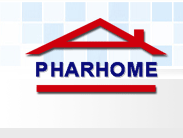
Isotretinoin
Identification
Molecular Formula: C20H28O2
Molecular Weight: 300.44
CAS Registry Number: 4759-48-2 Molecular Structure
Melting point: 174-177 oC
Water solubility: insoluble
Clinical use
Indications
Isotretinoin is indicated for the treatment of severe cystic acne vulgaris.[5][6] It is also effective for hidradenitis suppurativa and some cases of severe acne rosacea.[6] It can also be used to help treat harlequin ichthyosis, and is used in xeroderma pigmentosum cases to relieve keratoses.
Although extremely rare, isotretinoin has been used as a treatment for Fibrodysplasia Ossificans Progressiva.
Prescribing restrictions
In the United Kingdom, this drug may only be prescribed by, or under the supervision of, a consultant dermatologist.[7] A similar situation exists in most Australian states – in New South Wales and Victoria, for instance, the prescriber must be a Fellow of the Australasian College of Dermatologists (FACD).[8] In New Zealand, isotretinoin can be prescribed by any doctor but is subsidised only if prescribed by a skin specialist/dermatologist. As New Zealand General Practitioner visits are subsidised it is usually cheaper for the patient to buy their isotretinoin with a GP prescription than to pay to see a dermatologist.
Since 1 March 2006, the dispensing of isotretinoin in the United States has been controlled by a FDA-mandated website called iPLEDGE – dermatologists are required to register their patients before prescribing and pharmacists are required to check the website before dispensing the drug. The patient must visit the iPLEDGE website or call the hotline number in order to log in with his or her ID code to answer the iPLEDGE questionaire. The prescription may not be dispensed until all three parties have complied. A physician may not prescribe more than a 30-day supply. A new prescription may not be written for at least 30 days. Pharmacies are also under similar restriction. There is also a 7-day window in which the medication must be picked up at the pharmacy. If the original prescription is lost, or pick-up window is missed, the patient must re-qualify to have another prescription written. Doctors and pharmacists must also verify written prescriptions in an online system before patients may fill the prescription.
In Mexico, this drug is of restricted use, and an official identification and patient signature is required by the pharmacies.
Dosage
10 mg capsuleThe dose of isotretinoin a patient receives is dependent on their weight and the severity of the condition. High dose treatments are administered between 0.5 mg/kg/day to 2 mg/kg/day (usually at 0.5 to 1 mg/kg/day[9], divided into two doses), for a total treatment of 4–6 months. A second course may be used two months following the cessation of the initial course if severe acne recurs. Efficacy appears to be related to the cumulative dose of isotretinoin taken, with a total cumulative dose of 120–150 mg/kg used as a guideline.[5][6] High dose treatments should only be used as a last resort due to adverse side effects.
Other studies show that lower dosage treatments are just as effective.[10][11] In these experiments, subjects used 20mg/day, which is 0.25 mg/kg/day for an 80 kg (176 pounds) person.
More experiments and studies showing the success of low dosage treatments with diminished or non-existent side effects.

- Boldenone undecyle
- Gamma Butyrolacton
- Trenbolone acetate
- Nandrolone decanoa
- Testosterone enant
- Phentolamine Mesyl
- Dutasteride
- Betahistine Mesyla
- Biotin/Vitamin H
- Clomiphene Citrate
- Fenoprofen Calcium
- Finasteride
- Hyaluronic Acid
- Isotretinoin
- Minoxidil
- Pueraria Extract
- Rimonabant hcl
- Schisandrin
- Sibutramine hcl
- Spironolactone
